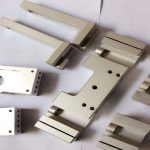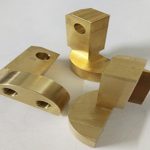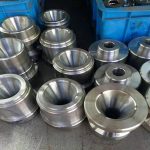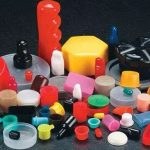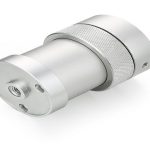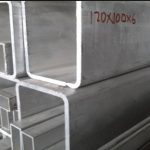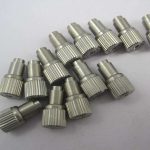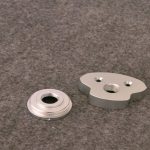A certain film is formed on the surface of the tool by chemical or physical methods (ie coating process), so that the cutting tool can obtain excellent comprehensive cutting performance, thereby meeting the requirements of high-speed cutting; since the advent of hard-coated tools in the early 1970s , Chemical vapor deposition (CVD) technology and physical vapor deposition (PVD) technology have been developed one after another, opening a new chapter in history for the improvement of tool performance.
Compared with uncoated tools, coated tools have significant advantages: it can greatly increase the life of cutting tools; effectively improve cutting efficiency; improve machining accuracy and significantly improve the surface quality of the processed workpiece; effectively reduce tools Consumption of materials reduces processing costs; reduces the use of coolants, reduces costs, and is conducive to environmental protection.
Features of tool coating
1. The coating technology can greatly increase the surface hardness of the tool without reducing the strength of the tool, and the hardness that can be achieved at present is close to 100GPa;
2. With the rapid development of coating technology, the chemical stability and high temperature oxidation resistance of the film have become more prominent, making high-speed cutting processing possible.
3. The lubricating film has good solid-phase lubrication properties, which can effectively improve the processing quality and is also suitable for dry cutting processing;
4. As the final process of tool manufacturing, coating technology has almost no impact on tool accuracy and can be repeated coating processes.
Commonly used coatings
1. Titanium Nitride Coating: Titanium Nitride (TiN) is a general-purpose PVD coating that can increase the hardness of the tool and has a higher oxidation temperature. The coating can be used for high-speed steel cutting tools or forming tools to obtain very good processing results.
2. Chromium Nitride Coating: The good adhesion resistance of CrN coating makes it the first choice in the processing that is prone to buildup. After coating this almost invisible coating, the processing performance of high-speed steel cutting tools or cemented carbide cutting tools and forming tools will be greatly improved.
3. Diamond coating: CVD diamond coating can provide the best performance for processing tools of non-ferrous metal materials. It is an ideal coating for processing graphite, metal matrix composites (MMC), high silicon aluminum alloys and many other highly abrasive materials ( Note: Pure diamond-coated tools cannot be used for processing steel parts, because a large amount of cutting heat will be generated when processing steel parts, and will cause a chemical reaction to occur, which will destroy the adhesion layer between the coating and the tool).
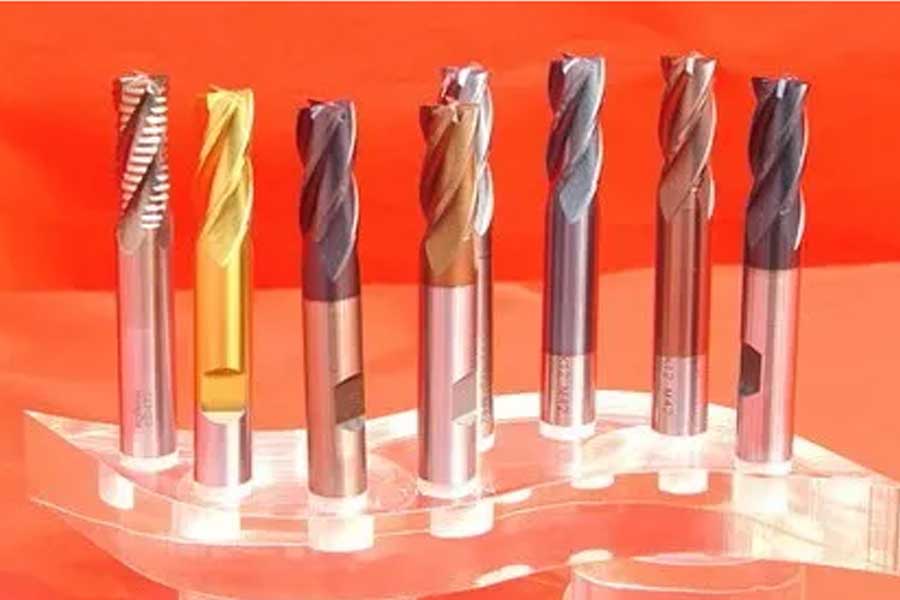
4. Nitrogen carbide coating: The carbon element added to the titanium carbide (TiCN) coating can increase the hardness of the tool and obtain better surface lubricity. It is an ideal coating for high-speed steel tools.
5. Nitrogen-aluminum-titanium or nitrogen-titanium-aluminum coating (TiAlN/AlTiN): The aluminum oxide layer formed in the TiAlN/AlTiN coating can effectively improve the high temperature machining life of the tool. Cemented carbide tools mainly used for dry or semi-dry cutting can choose this coating. According to the ratio of aluminum to titanium in the coating, AlTiN coating can provide higher surface hardness than TiAlN coating, so it is another feasible coating choice in the field of high-speed processing.
6. In addition, there is diamond-like carbon coating (DLC):
DLC has many excellent characteristics: high hardness -60GPa or above Hv6000; low friction coefficient -0.06; excellent film compactness; good chemical stability and good optical properties. The special performance of the DLC coating applied to the tool far exceeds that of other hard coatings. The main applications of tools coated with DLC include: graphite cutting, cutting of various non-ferrous metals (such as aluminum alloys, copper alloys, etc.), and cutting of non-metallic hard materials (such as acrylic, glass fiber, and PCB materials).
Because DLC has a very low coefficient of friction (0.05~0.2) and self-lubricating, tools coated with DLC are the best choice for dry cutting. Compared with uncoated tools, the cutting force of DLC-coated tools can be reduced by 6% under dry cutting conditions. Compared with other coated tools (such as TiN, TiAlN), the cutting force of DLC coated tools can be reduced by 23% under dry cutting conditions; it is also because the low friction coefficient of DLC can make metal cutting (aluminum The cutting force of alloy cutting is greatly reduced, thereby greatly reducing energy consumption. Under cutting conditions with coolant, the cutting force of DLC-coated tools is 18% lower than that of uncoated tools and other coated tools, and the surface roughness of the processed metal decreases by Ra0.04~R0.23um), reaching Ra0 .38.
Coating technology and tool coating knowledge
1. Titanium carbide (TiCN) coating has higher hardness than titanium nitride (TiN) coating. Due to the increased carbon content, the hardness of the TiCN coating is increased by 33%, and the hardness range is about Hv3000-4000 (depending on the manufacturer).
2. CVD diamond coating: CVD diamond coating with a surface hardness of up to Hv9000 has been relatively mature in the application of tools. Compared with PVD coated tools, the life of CVD diamond coated tools is increased by 10-20 times. The high hardness of diamond-coated tools makes the cutting speed 2-3 times higher than that of uncoated tools, so that the oxidation temperature of CVD diamond refers to the temperature value when the coating begins to decompose. The higher the oxidation temperature, the more advantageous it is for cutting under high temperature conditions. Although the normal temperature hardness of TiAlN coating may be lower than that of TiCN coating, it has been proved that it is much more effective than TiCN in high temperature processing. The reason why the TiAlN coating can maintain its hardness at high temperatures is that a layer of aluminum oxide can be formed between the tool and the chip, and the aluminum oxide layer can transfer heat from the tool to the workpiece or chip. Compared with high-speed steel tools, the cutting speed of carbide tools is usually higher, which makes TiAlN the preferred coating for carbide tools. Carbide drill bits and end mills usually use this PVDTiAlN coating stone coating Knives have become a good choice for cutting non-ferrous and non-metallic materials.
3. The hard film on the surface of the tool has the following requirements for the material: ①High hardness and good wear resistance; ②Stable chemical performance, no chemical reaction with the workpiece material; ⑧Heat resistance and oxidation resistance, low friction coefficient, strong adhesion to the substrate Wait. It is difficult for a single coating material to meet the above technical requirements. The development of coating materials has gone from the initial single TiN coating and TiC coating to the TiC-A12O3-TiN composite coating and the development stage of TiCN, TiAlN and other multiple composite coatings. Now the latest development of TiN/NbN, TiN/CN, and other multi-element composite film materials have greatly improved the performance of tool coatings.
4. In the manufacturing process of coated tools, the choice is generally based on the hardness of the coating, wear resistance, high temperature oxidation resistance, lubricity and anti-adhesiveness. Among them, the oxidation resistance of the coating is the most relevant to the cutting temperature. Directly related technical conditions. The oxidation temperature refers to the temperature at which the coating begins to decompose. The higher the oxidation temperature, the more advantageous it is for cutting under high temperature conditions. Although the normal temperature hardness of TiAlN coating may be lower than that of TiCN coating, it has been proved that it is much more effective than TiCN in high temperature processing. The reason why the TiAlN coating can maintain its hardness at high temperatures is that a layer of aluminum oxide can be formed between the tool and the chips, and the aluminum oxide layer can transfer heat from the tool to the workpiece or chips. Compared with high-speed steel tools, the cutting speed of carbide tools is usually higher, which makes TiAlN the preferred coating for carbide tools. Carbide drills and end mills usually use this PVDTiAlN coating.
5. From the perspective of application technology: In addition to cutting temperature, cutting depth, cutting speed and coolant may all have an impact on the application effect of tool coatings.
Progress of commonly used coating materials and super hard coating technology
Among the hard coating materials, TiN is the most mature and widely used. At present, the utilization rate of TiN-coated high-speed steel tools in industrially developed countries has accounted for 50% to 70% of high-speed steel tools, and the utilization rate of some complex tools that cannot be reground has exceeded 90%. Due to the high technical requirements of modern metal cutting tools, TiN coatings are increasingly unable to adapt. The oxidation resistance of TiN coating is poor. When the service temperature reaches 500°C, the film is obviously oxidized and ablated, and its hardness cannot meet the needs. TiC has higher microhardness, so the wear resistance of this material is better. At the same time, it adheres firmly to the substrate. When preparing multi-layer wear-resistant coatings, TiC is often used as the underlying film in contact with the substrate. It is a very common coating material in coated tools.
The development of TiCN and TiAlN has brought the performance of coated tools to a higher level. TiCN can reduce the internal stress of the coating, improve the toughness of the coating, increase the thickness of the coating, prevent the spread of cracks, and reduce tool chipping. Setting TiCN as the main wear-resistant layer of the coated tool can significantly increase the life of the tool. TiAlN has good chemical stability and oxidation resistance. When processing high-alloy steel, stainless steel, titanium alloy, and nickel alloy, it can extend the life of 3-4 times than TiN-coated tools. If there is a higher Al concentration in the TiAlN coating, a very thin layer of non-state A12O3 will be formed on the surface of the coating during cutting, forming a hard inert protective film. The coated tool can be used more effectively High-speed machining. The oxygen-doped titanium carbide TiCNO has high microhardness and chemical stability, and can produce a composite coating equivalent to TiC + A12O3.
Among the above-mentioned hard film materials, there are three kinds of hard film materials whose microhardness HV can exceed 50 GPa: diamond film, cubic boron nitride CBN, and carbon nitride.
Many diamond films are deposited at a temperature of 600°C to 900°C, so this technique is often used to deposit diamond films on the surface of cemented carbide tools. The commercialization of diamond cemented carbide tools is a major achievement in coating technology in recent years.
CBN is second only to diamond in terms of hardness and thermal conductivity. It has excellent thermal stability and does not oxidize when heated to 1000°C in the atmosphere. CBN has extremely stable chemical properties for iron group metals. Unlike diamond, which is not suitable for processing steel, it can be widely used for finishing and grinding of steel products. In addition to excellent wear resistance, CBN coating can also process heat-resistant steel, titanium alloy, and hardened steel at a relatively high cutting speed, and can cut high-hardness chilled rolls, hardened materials mixed with carbon, and wear on tools. Very serious Si-Al alloys, etc. The methods of low-pressure gas phase synthesis of CBN films mainly include CVD and PVD methods. CVD includes chemical transport PCVD, hot-wire assisted heating PCVD, ECR-CVD, etc.; PVD includes reactive ion beam plating, active reactive evaporation, laser evaporation ion beam assisted deposition, etc. There is still a lot of work to be done in the basic research and application technology of CBN synthesis technology, including reaction mechanism and film formation process, plasma diagnosis and mass spectrometry analysis, determination of optimal process conditions, and development of high-efficiency equipment.
Carbon nitride may have a hardness that meets or exceeds the hardness of diamond. The success of the synthesis of carbon nitride is an outstanding example of molecular engineering. As a superhard material, carbon nitride is expected to have many other valuable physical and chemical properties. The study of carbon chloride has become a hot topic in the field of materials science in the world.
Link to this article: Tool coating technology
Reprint Statement: If there are no special instructions, all articles on this site are original. Please indicate the source for reprinting:https://www.cncmachiningptj.com/,thanks!
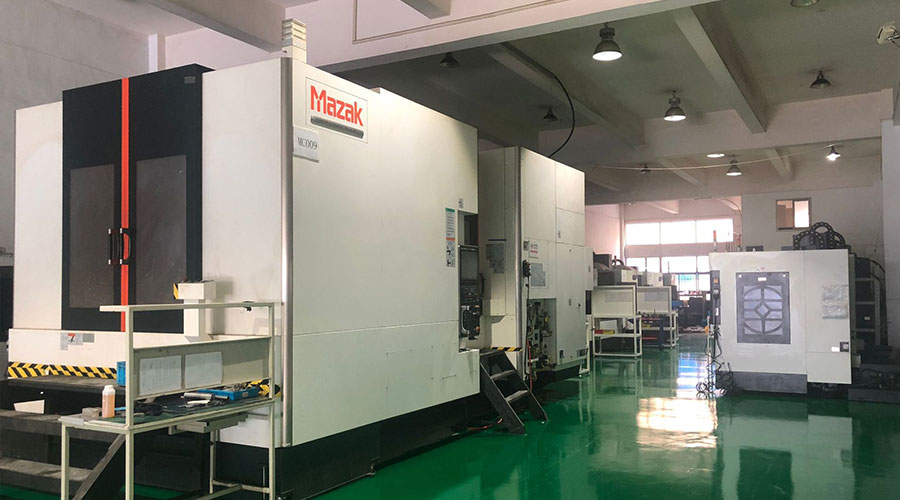 Sheet metal, beryllium, carbon steel, magnesium, 3D printing, precision CNC machining services for heavy equipment, construction, agriculture and hydraulic industries. Suitable for plastics and rare alloys machining. It can turn parts up to 15.7 inches in diameter. Processes include swiss machining,broaching, turning, milling, boring and threading. It also provides metal polishing, painting, surface grinding and shaft straightening services. The production range is up to 50,000 pieces. Suitable for screw, coupling, bearing, pump, gearbox housing, drum dryer and rotary feed valve applications.PTJ will strategize with you to provide the most cost-effective services to help you reach your target,Welcome to Contact us ( [email protected] ) directly for your new project.
Sheet metal, beryllium, carbon steel, magnesium, 3D printing, precision CNC machining services for heavy equipment, construction, agriculture and hydraulic industries. Suitable for plastics and rare alloys machining. It can turn parts up to 15.7 inches in diameter. Processes include swiss machining,broaching, turning, milling, boring and threading. It also provides metal polishing, painting, surface grinding and shaft straightening services. The production range is up to 50,000 pieces. Suitable for screw, coupling, bearing, pump, gearbox housing, drum dryer and rotary feed valve applications.PTJ will strategize with you to provide the most cost-effective services to help you reach your target,Welcome to Contact us ( [email protected] ) directly for your new project.
Link to this article:Tool coating technology
Reprint Statement: If there are no special instructions, all articles on this site are original. Please indicate the source for reprinting:Tungusten,Thanks!^^

